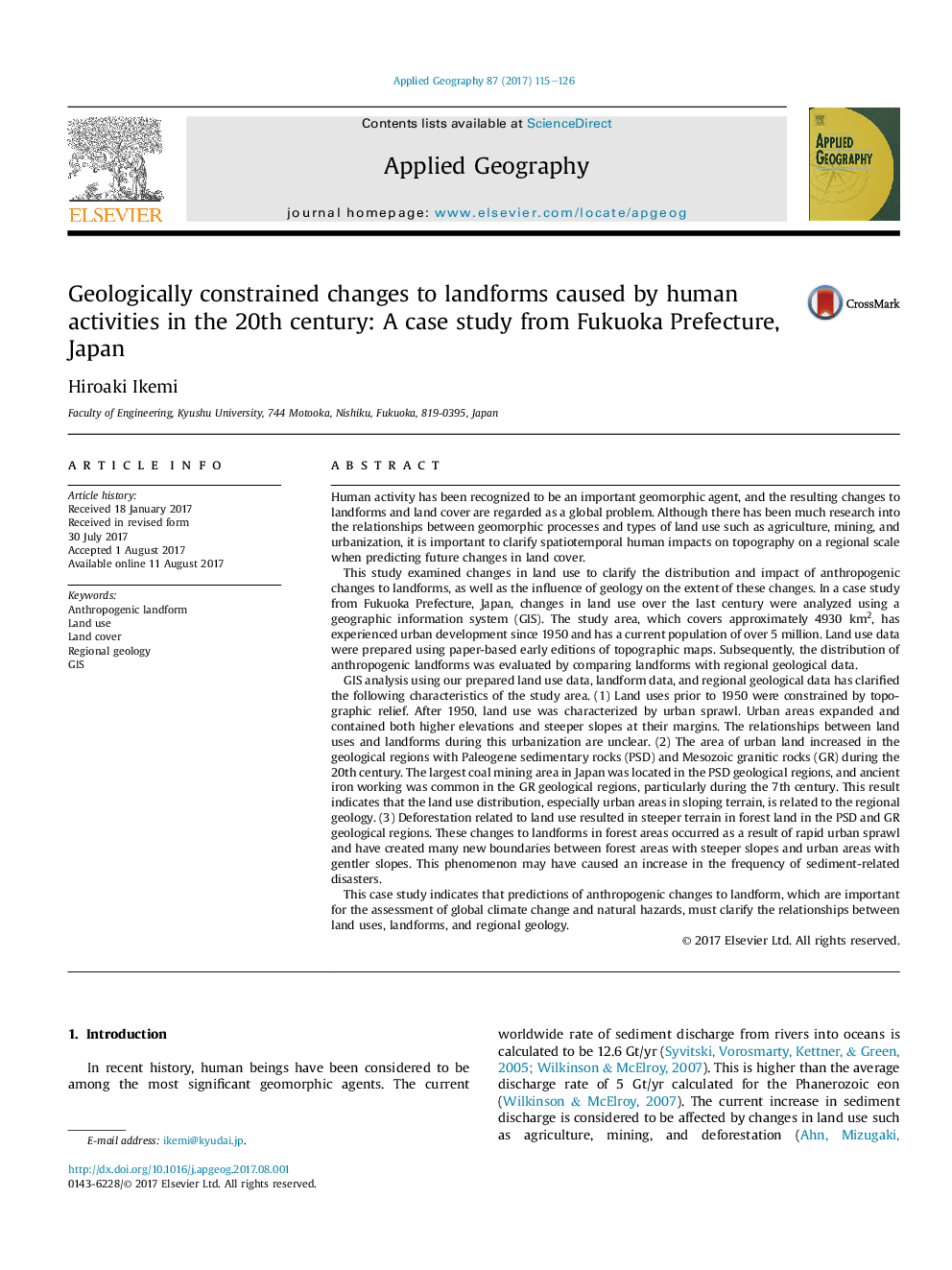| کد مقاله | کد نشریه | سال انتشار | مقاله انگلیسی | نسخه تمام متن |
|---|---|---|---|---|
| 6458379 | 1421030 | 2017 | 12 صفحه PDF | دانلود رایگان |
- This study clarified the distribution of anthropogenic changes to landforms, as well as the influence of geology.
- In a case study from Fukuoka Prefecture, Japan, changes in land use over the last century were analyzed using GIS.
- Land uses prior to 1950 were constrained by topographic relief. After 1950, land use was characterized by urban sprawl.
- The distribution of urban areas in sloping terrain is related to the regional geology.
- Urbanization resulted in steeper terrain in forest and it may have increased the frequency of sediment-related disasters.
Human activity has been recognized to be an important geomorphic agent, and the resulting changes to landforms and land cover are regarded as a global problem. Although there has been much research into the relationships between geomorphic processes and types of land use such as agriculture, mining, and urbanization, it is important to clarify spatiotemporal human impacts on topography on a regional scale when predicting future changes in land cover.This study examined changes in land use to clarify the distribution and impact of anthropogenic changes to landforms, as well as the influence of geology on the extent of these changes. In a case study from Fukuoka Prefecture, Japan, changes in land use over the last century were analyzed using a geographic information system (GIS). The study area, which covers approximately 4930Â km2, has experienced urban development since 1950 and has a current population of over 5 million. Land use data were prepared using paper-based early editions of topographic maps. Subsequently, the distribution of anthropogenic landforms was evaluated by comparing landforms with regional geological data.GIS analysis using our prepared land use data, landform data, and regional geological data has clarified the following characteristics of the study area. (1) Land uses prior to 1950 were constrained by topographic relief. After 1950, land use was characterized by urban sprawl. Urban areas expanded and contained both higher elevations and steeper slopes at their margins. The relationships between land uses and landforms during this urbanization are unclear. (2) The area of urban land increased in the geological regions with Paleogene sedimentary rocks (PSD) and Mesozoic granitic rocks (GR) during the 20th century. The largest coal mining area in Japan was located in the PSD geological regions, and ancient iron working was common in the GR geological regions, particularly during the 7th century. This result indicates that the land use distribution, especially urban areas in sloping terrain, is related to the regional geology. (3) Deforestation related to land use resulted in steeper terrain in forest land in the PSD and GR geological regions. These changes to landforms in forest areas occurred as a result of rapid urban sprawl and have created many new boundaries between forest areas with steeper slopes and urban areas with gentler slopes. This phenomenon may have caused an increase in the frequency of sediment-related disasters.This case study indicates that predictions of anthropogenic changes to landform, which are important for the assessment of global climate change and natural hazards, must clarify the relationships between land uses, landforms, and regional geology.
Journal: Applied Geography - Volume 87, October 2017, Pages 115-126
